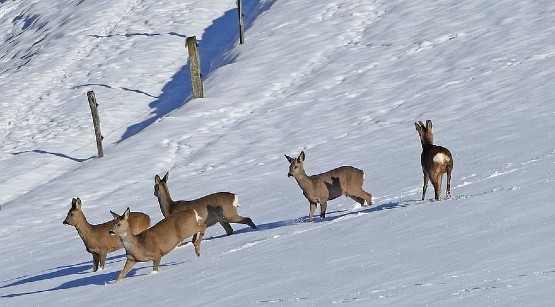What affect will the Coronavirus restrictions and the catastrophic fall in the price of venison have on deer numbers?

When first I arrived at my new home in Wiltshire, it was a joy to be able to point out to my children a small family of three Roe deer, as they browsed the field of corn at the end of my garden. Today as I look out, it is with even more pleasure that the group of three has been joined by a further two. All things being equal, with Roe giving birth to twins each year, it is reasonable to expect that group of five Roe to be at least nine by early summer. Such is the exponential growth of Roe.
I do not stalk the ground myself, so I am left to wonder if the resident deer stalker will seek to weed out a deer or two before the end of March, when the season for females comes to an end, or if he, like many of us, has been house-bound by the latest Coronavirus regulations.
What is sure, far fewer deer will be shot during these crucial first few months of the year than would be usual.
In Scotland, where the last day of the season for Red, Sika and Fallow Doe comes on the 15th February, and with an absence of guests visiting the highlands to participate in the hind cull, there will be a huge task for the professional stalker to undertake on his own, without any financial remuneration for the work from paying guests. A problem compounded by the catastrophic fall in the price of venison. Two factors I anticipate, that may contribute to many estate’s making a decision to hold off until next season, when proper remuneration might be achieved.
Worryingly, with deer population growth being exponential, it may be that as a result, in some areas where deer numbers are high, such as the highlands of Scotland, the South east with its burgeoning Fallow numbers and the Bedfordshire area where Muntjac numbers are biblical, the deer manager will struggle to ever catch up. This of course will have a disastrous effect on the biodiversity of the UK countryside. Time will tell, however, on the upside, for the recreational stalker who wishes to see plenty of deer, the season ahead looks extremely exciting.
If you are able to head out in February, a couple of crucial points to remember.
Amongst the herding species (Fallow, Red & Sika) the large, mixed sex herds will break-up into smaller, single sex groups.
Among Roe deer, the opposite will be true, with the Roe now forming larger mixed family groups, such as the one I observe from my kitchen table.
In relation to Roe, it is also important to be aware, that whilst the mature Roebuck will now appear advanced in velvet, this is not true of all Roebuck. The Roebuck kid’s will in-fact, be in the process of casting their ‘buttons’, so will be absent of antler for some weeks, before re growing their first simple set of antlers in time for the start of the buck season in April.
What is for sure, with the gradual easing of Coronavirus restrictions due at the end of the month and as the hours of daylight start to improve, we will all be itching to get out and here at County Deer Stalking, if the end of the first lock-down is anything to judge by, we will be inundated with a swathe of bookings.
For those keen to get into deer stalking this year, with time on their hands during ‘Lockdown’, there is a perfect opportunity to complete your PDS1 Deer Stalking Certificate Online, through our County Deer Stalking - E-learning platform. Why not make the most of the coming months and follow this link to get started: huntingacademy
 IN Season in England & Wales: Roe Doe, Fallow Doe & Fallow Buck, Sika Stag & Sika Hind, Red Stag & Red Hind, CWD Buck & CWD Doe, Muntjac Buck & Muntjac Doe.
IN Season in England & Wales: Roe Doe, Fallow Doe & Fallow Buck, Sika Stag & Sika Hind, Red Stag & Red Hind, CWD Buck & CWD Doe, Muntjac Buck & Muntjac Doe.
Off Season in England & Wales: Roebuck.
In Season in Scotland: Sika Hind, Red Hind and Fallow Doe until 15th Feb only. Fallow Buck & Roe Doe remain in season throughout February.
Off Season in Scotland: Red Stag, Sika Stag & Roebuck. Also Red & Sika Hind and Fallow Doe from 16th February.
(Peter Jones - Editor)



















